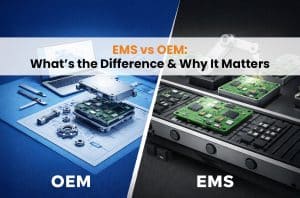Introduction
In the dynamic and difficult realm of electronics production, Soldering stands out as a fundamental technique, forming the backbone of stable connections among components. As the demand for smaller, more efficient electronic devices continues to surge, a comprehensive expertise of the numerous soldering strategies becomes vital. This blog put up is a deep dive into the types of soldering techniques, exploring the contributions that form the success of electronics production.
What is Soldering?
Soldering is a method used to join two or more metal components by melting a lower-melting-factor steel alloy known as solder. This melted solder flows among the components and solidifies, creating a robust and permanent bond. Soldering is widely used in electronics manufacturing to connect components to published circuit forums (PCBs) and in various other industries for joining steel elements. It offers benefits like excessive electric conductivity, sturdy mechanical energy, and comparatively low processing temperatures.
1.Surface Mount Technology (SMT)
Surface Mount Technology (SMT) is a soldering technique in modern electronics production.
a. Solder Paste Composition: SMT relies on solder paste, a meticulously crafted mixture of exceptional solder flux. This mixture is critical for facilitating the soldering technique by promoting adhesion and disposing of oxides.
b. Precision Component Placement: SMT involves the meticulous placement of digital components directly onto the surface of a circuit board (PCB). Automated machines or pick-and-place robots make certain precision in component positioning.
c. Refinement in Miniaturization: One of SMT’s key advantages lies in its capability to contribute to the miniaturization of electronic gadgets. By casting off the need for component leads and utilising the PCB floor efficiently, SMT permits the advent of compact and light-weight gadgets.
2.Through-Hole Soldering
Through-Hole Soldering gives a contrasting method to SMT, with a focus on robust mechanical connections and balance:
a. Component Lead Insertion: Through-Hole Soldering includes inserting issue leads thru holes in the PCB, facilitating a stable and mechanically strong connection. This is in particular positive for info subjected to mechanical pressure.
B. Hand-Assembly Flexibility: Unlike automatic SMT approaches, Through-Hole Soldering frequently entails manual meeting. Skilled technicians manually insert and solder components , presenting flexibility in low-quantity and specialised production situations.
c. Dual-Sided Soldering: Since Through-Hole components are normally mounted on each aspects of the PCB, this method accommodates a better density and complex circuitry.
3.Reflow Soldering
Reflow Soldering, a prominent technique in SMT programs, is based on precision and managed heating:
a. Solder Paste Application: The first step includes applying solder paste onto the PCB. This paste, comprising solder particles and flux, is crucial for developing a medium that promotes right adhesion and solder float.
b. Profile-Based Heating: Reflow soldering employs temperature profiles to ensure controlled heating. This precision prevents overheating and minimizes thermal pressure on sensitive digital components.
c. Automated Precision: Typically achieved using automated equipment, reflow soldering ensures consistency and precision inside the soldering process. This is specially effective for high-extent production.
4. Wave Soldering
Wave Soldering, a bulk soldering technique often applied in Through-Hole programs, gives performance and uniformity:
a. Selective Heating Method: The PCB is exceeded over a wave of molten solder, which selectively soldiers the exposed leads. This approach ensures a uniform and managed soldering system.
b. Excess Solder Removal: Following the soldering wave, a pump successfully gets rid of extra solder, leaving at the back of smooth and reliable solder joints. This step is critical for preserving the integrity of the connections.
c. High-Volume Production: Wave soldering is desired for its efficiency in excessive-volume manufacturing situations, making it a pass-to desire for purchaser
5.Hand Soldering
In an generation of automation, Hand Soldering stays a skilful and vital technique for tricky situations:
a. Operator Expertise: Hand soldering relies closely at the expertise of professional operators. Their precision performs a pivotal function in making sure the high-quality and reliability of solder joints.
b. Customization and Prototyping: Hand soldering offers extraordinary flexibility, making it ideal for personalisation and prototyping, wherein every connection calls for cautious interest.
c. Repair and Rework: When errors occur, or modifications are wanted, hand soldering becomes important for restore and transform, bearing in mind the correction of issues with out scrapping the entire PCB.
6.Selective Soldering
Selective Soldering combines the imparting precision and versatility.
a. Targeted Soldering: Selective Soldering allows for the targeted Soldering of unique areas at the PCB. This is high-quality for components that can not face up to the excessive temperatures related to wave soldering.
b. Versatility in Component Types: This technique accommodates a variety of aspect kinds at the same PCB, supplying manufacturers with the power to assemble complex circuits with components requiring exceptional soldering conditions.
c. Reduced Thermal Stress: By selectively soldering precise areas, the overall thermal stress on the PCB and components is minimized, contributing to the reliability of the final product.
Conclusion
In the ever-evolving era of electronics production, the choice of soldering techniques plays a pivotal role in figuring out the overall performance and reliability of electronic devices. Each technique brings its precise set of blessings and boundaries, necessitating manufacturers to make knowledgeable selections primarily based on the precise requirements of their merchandise. As generation progresses, soldering strategies continues to evolve, making sure the seamless integration of digital components into the devices that power our cutting-edge global. The versatility and intricacies of these soldering strategies underscore their vital role in shaping the electronics production


